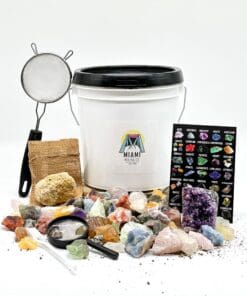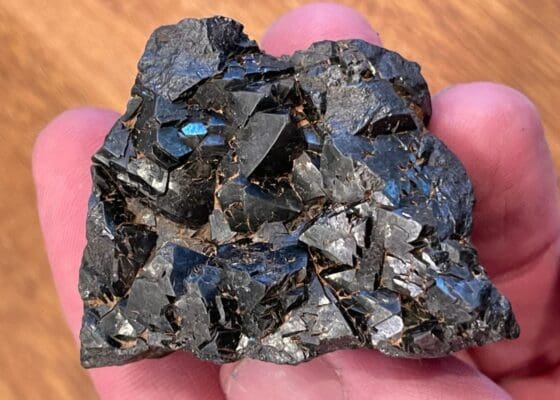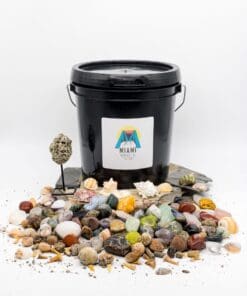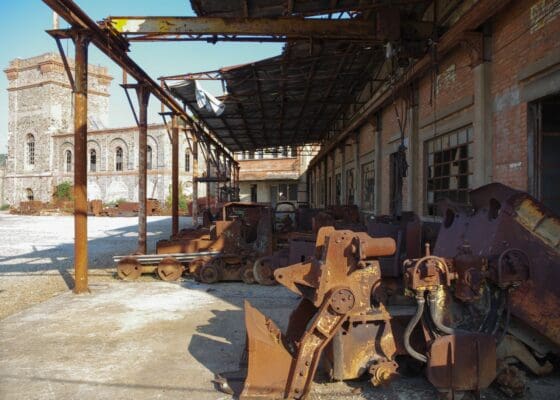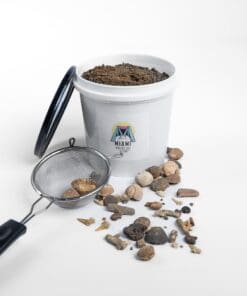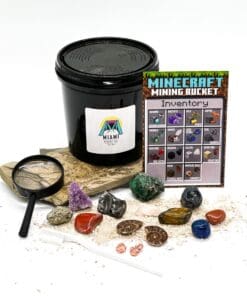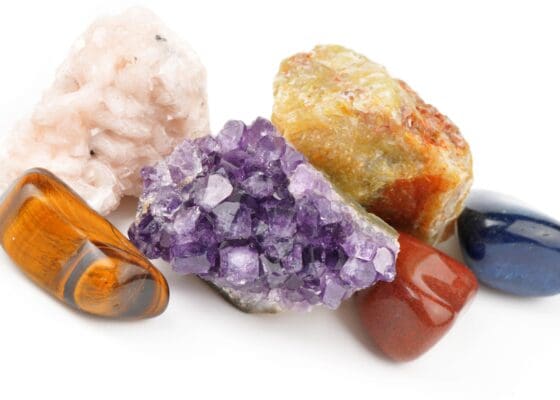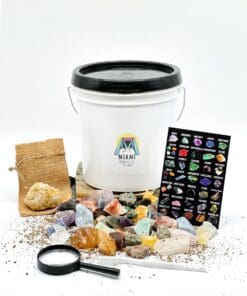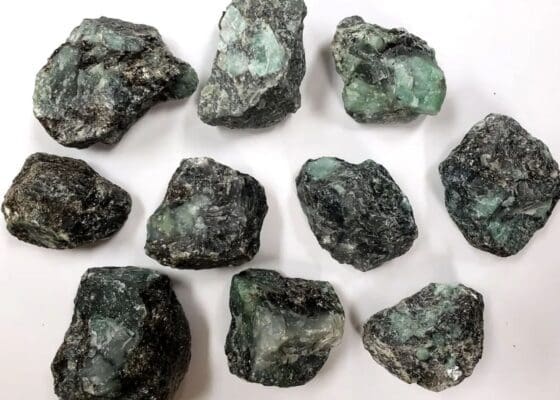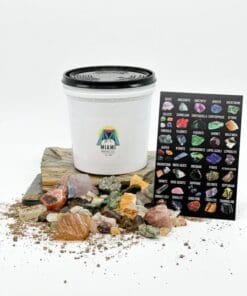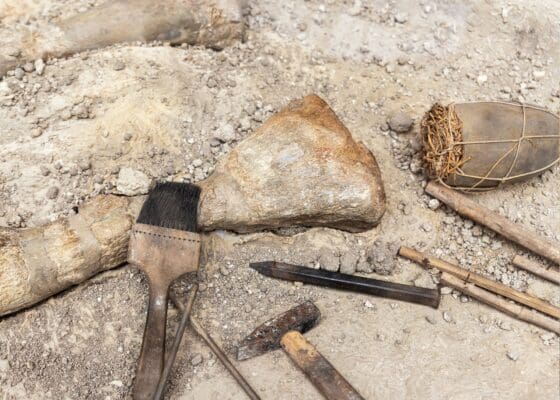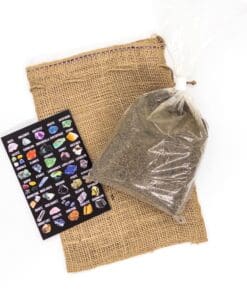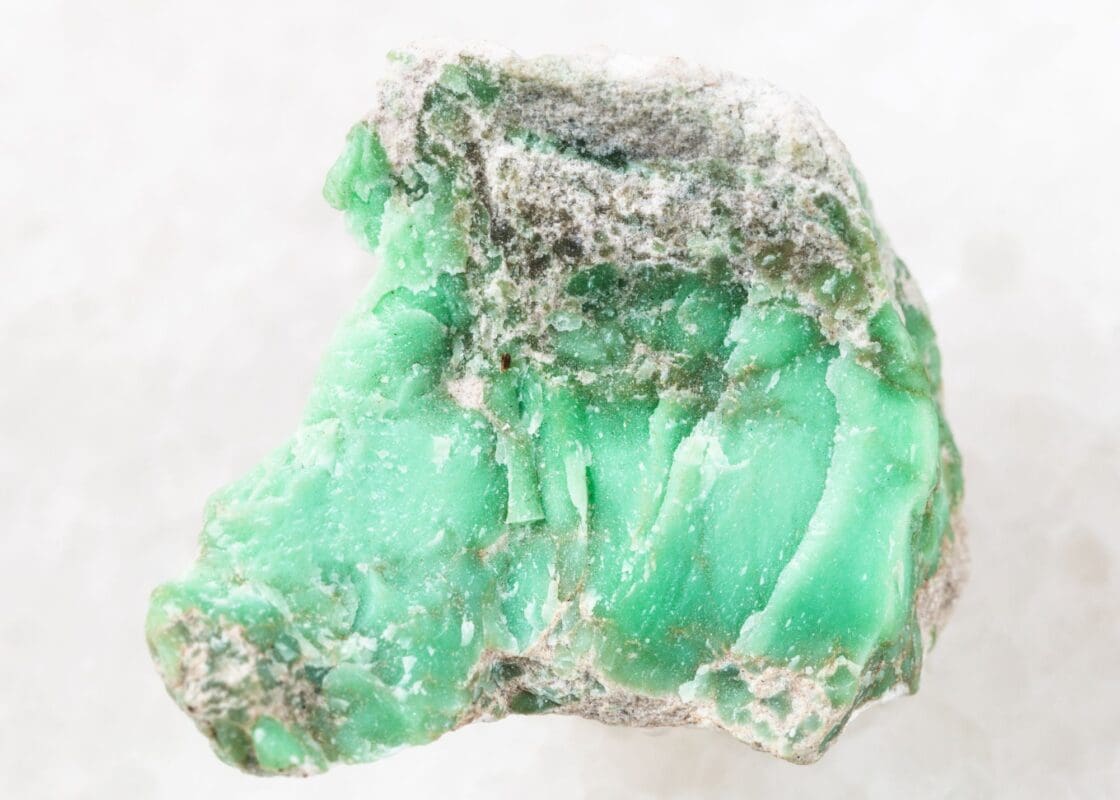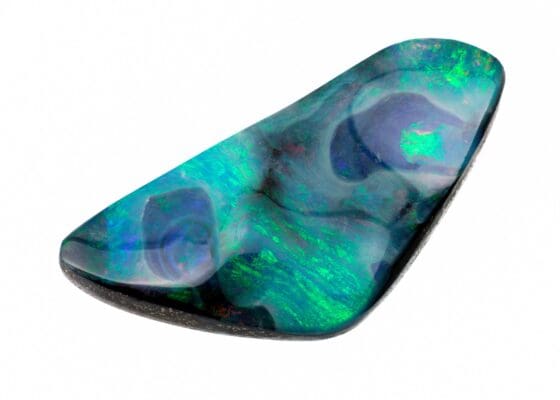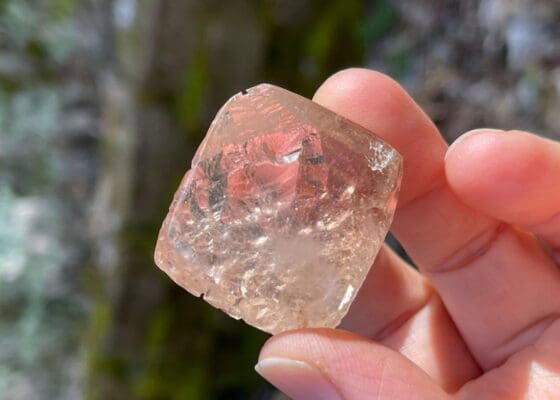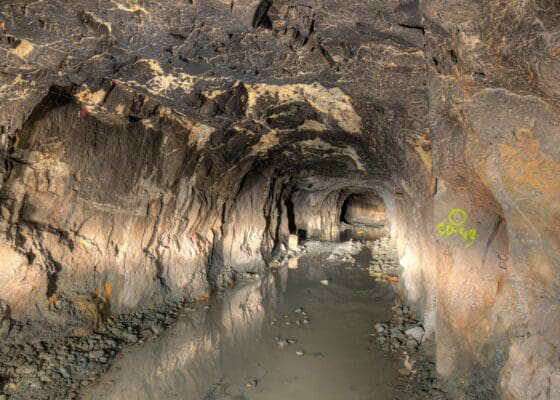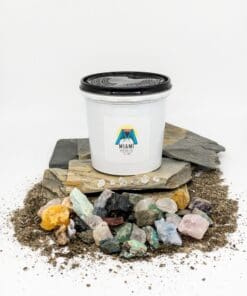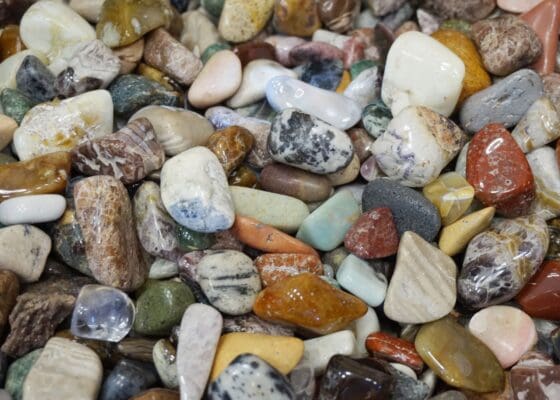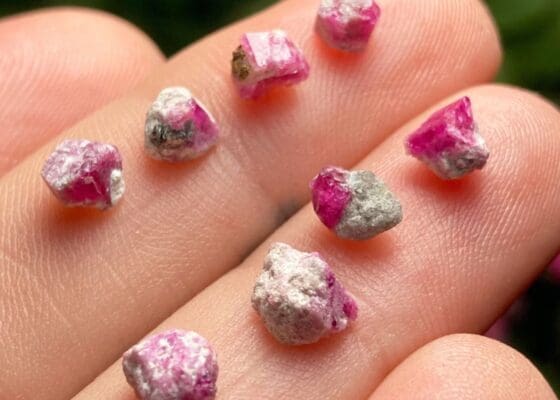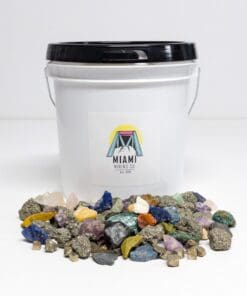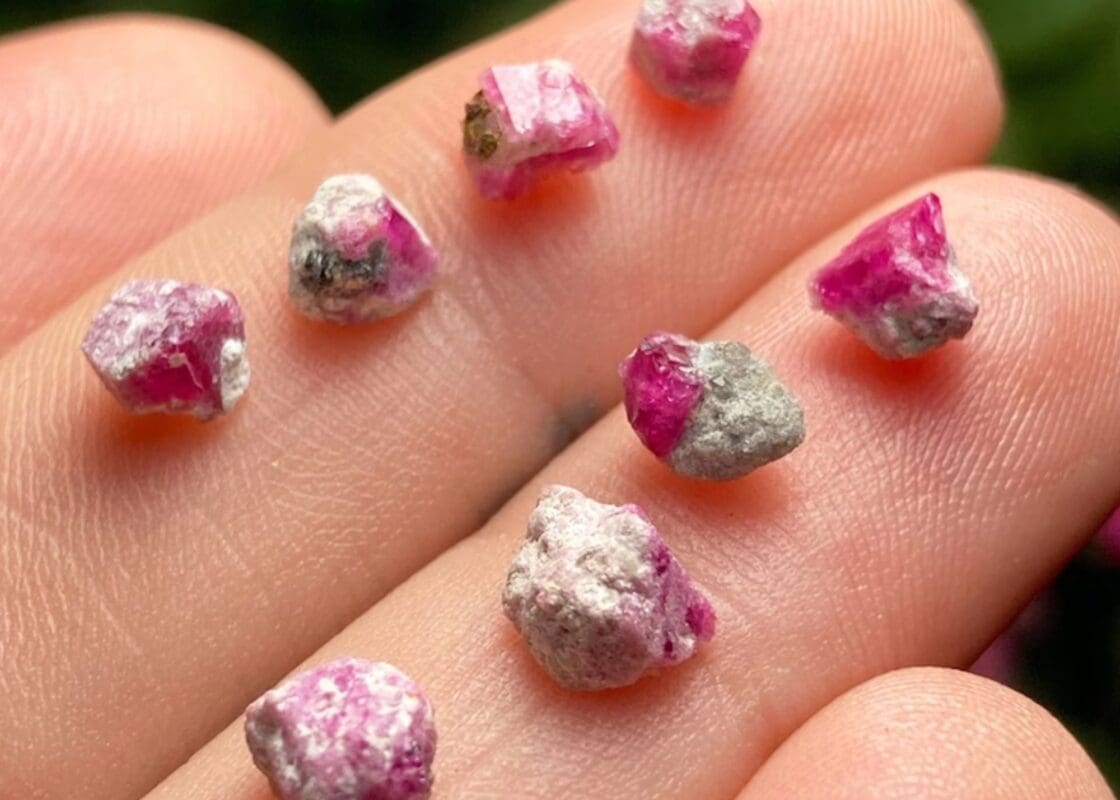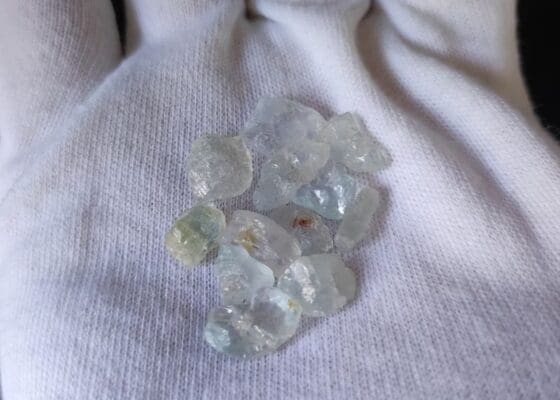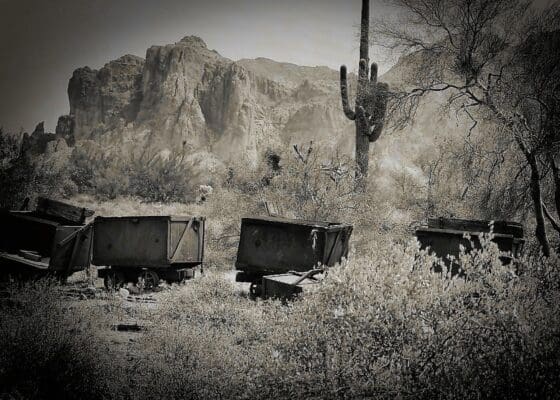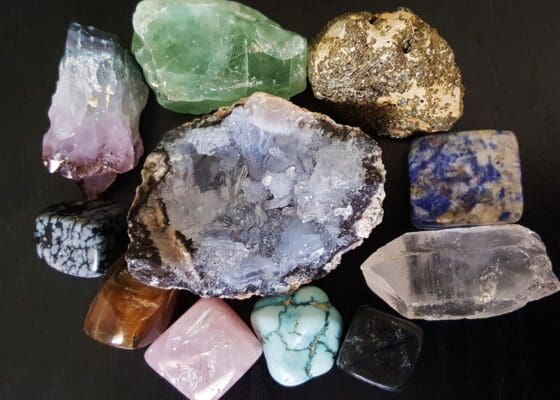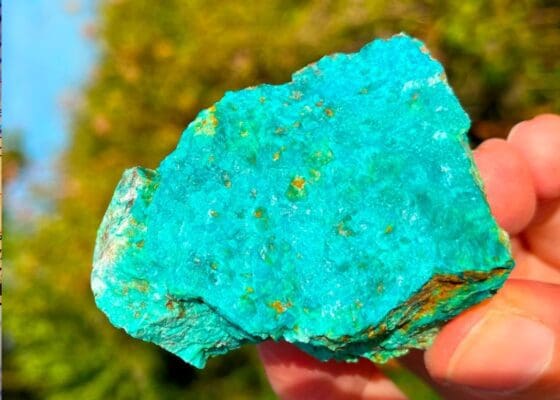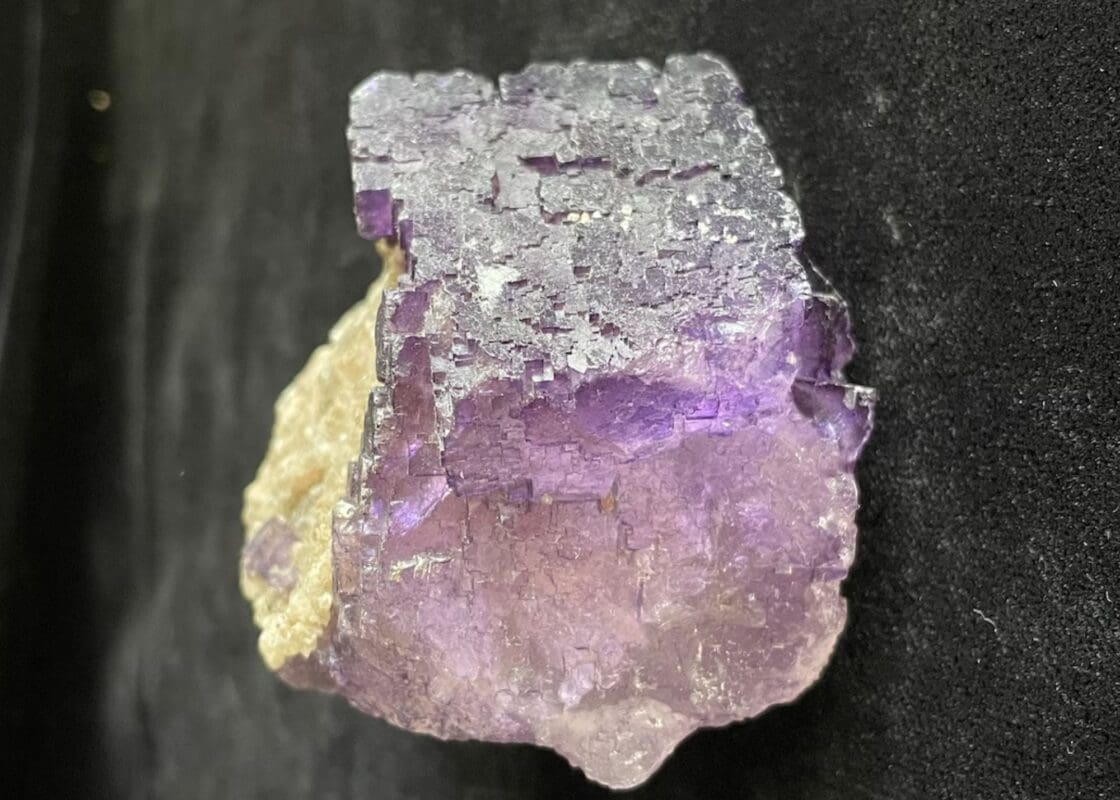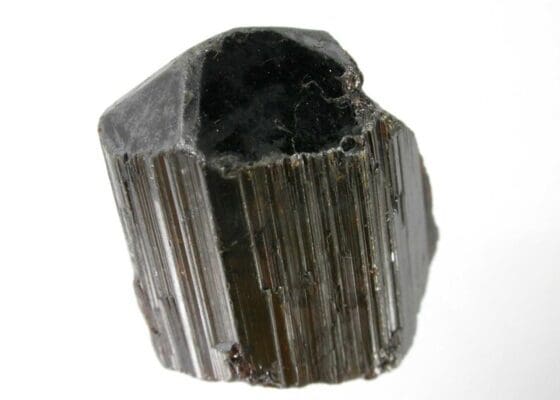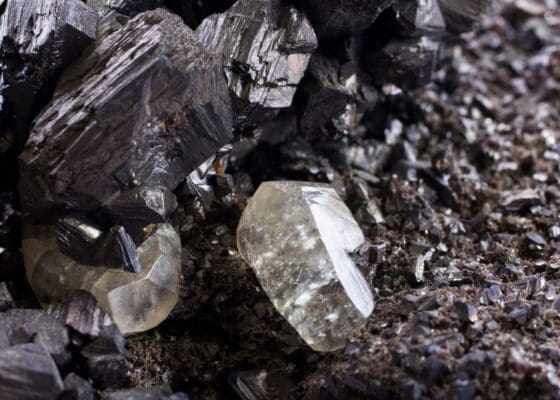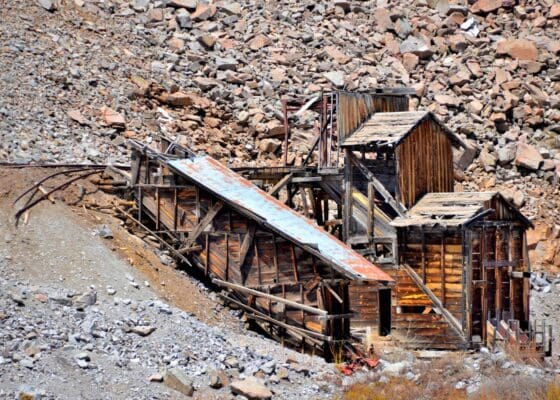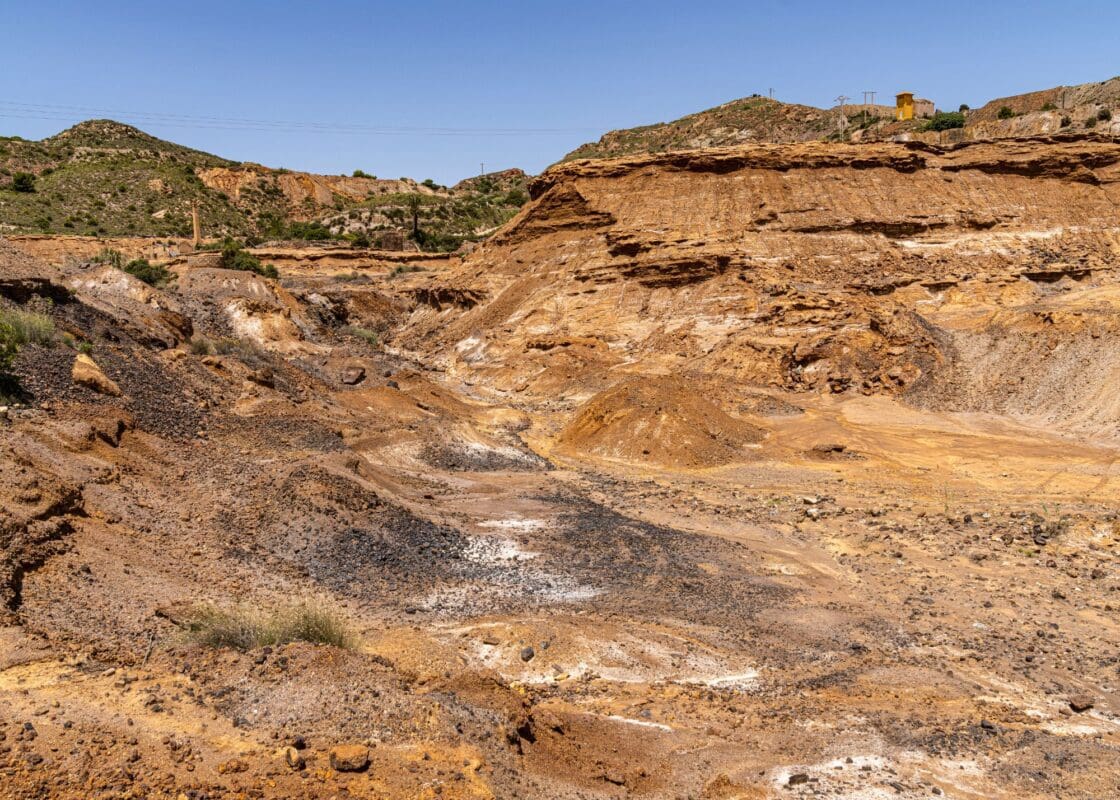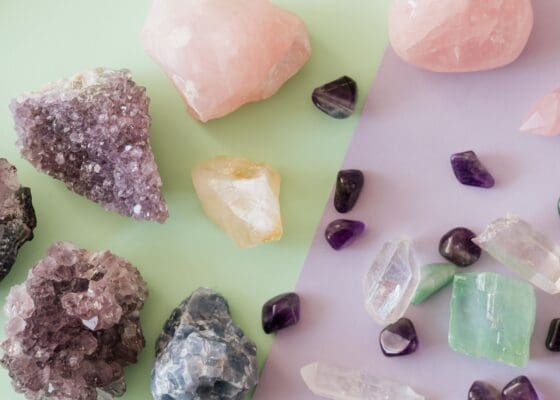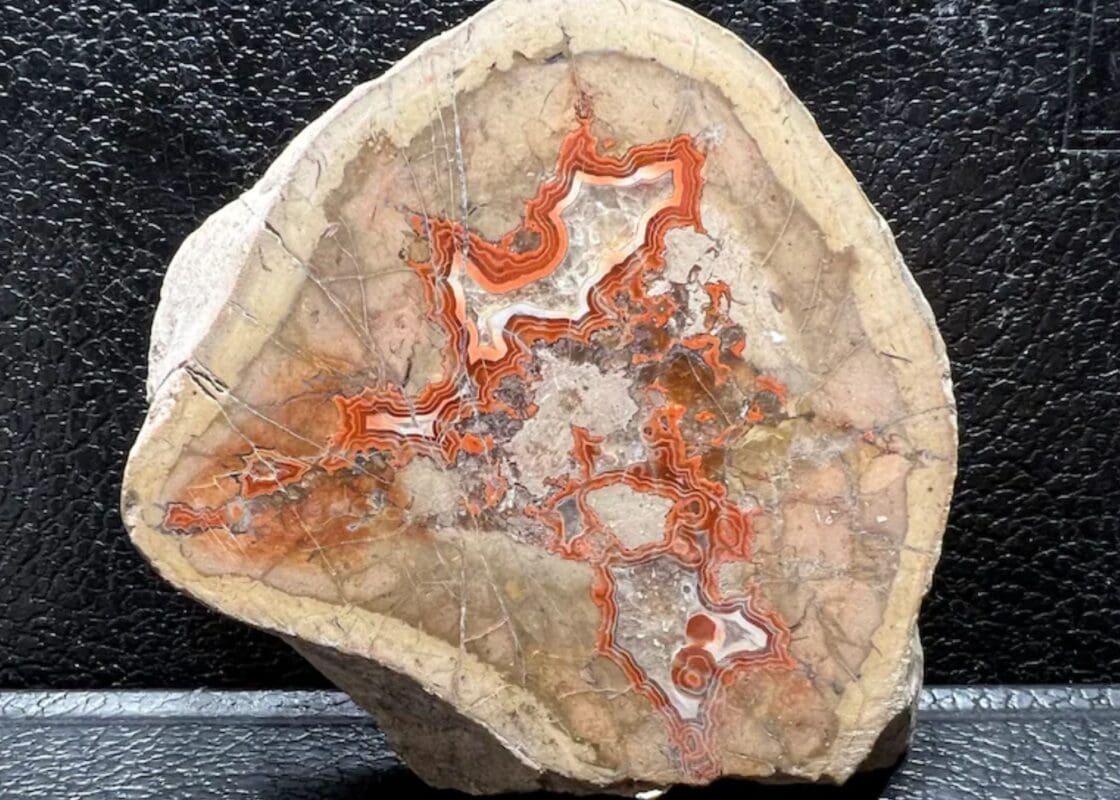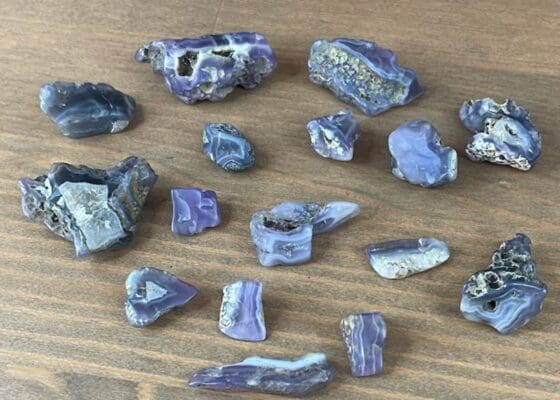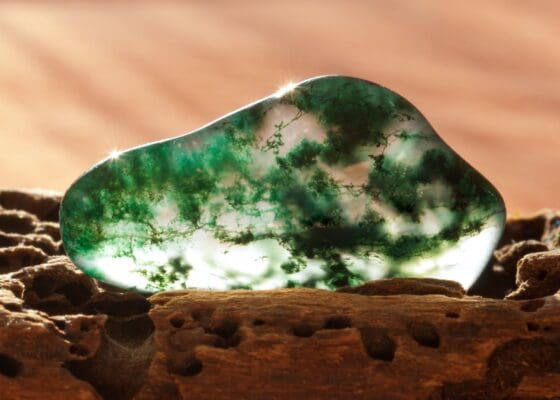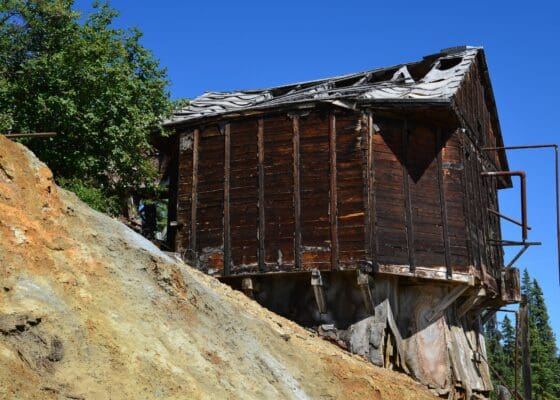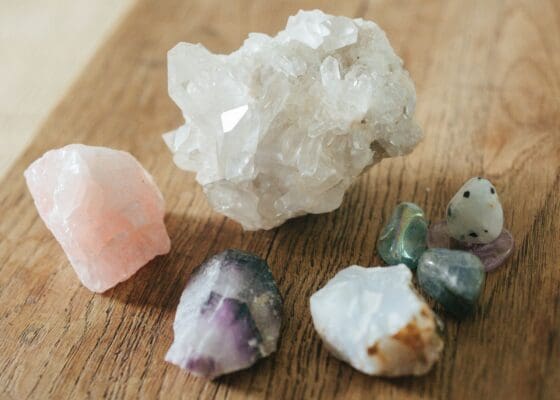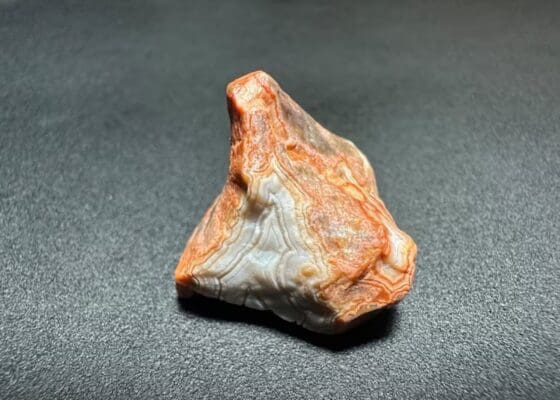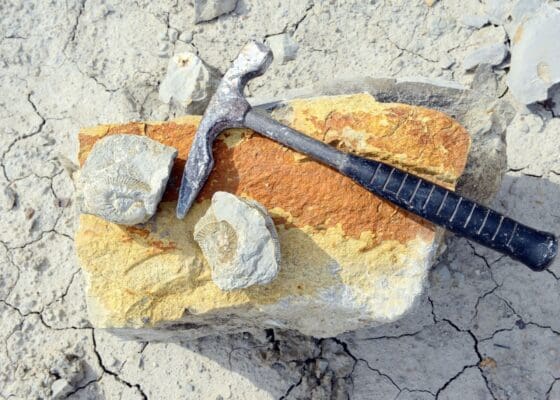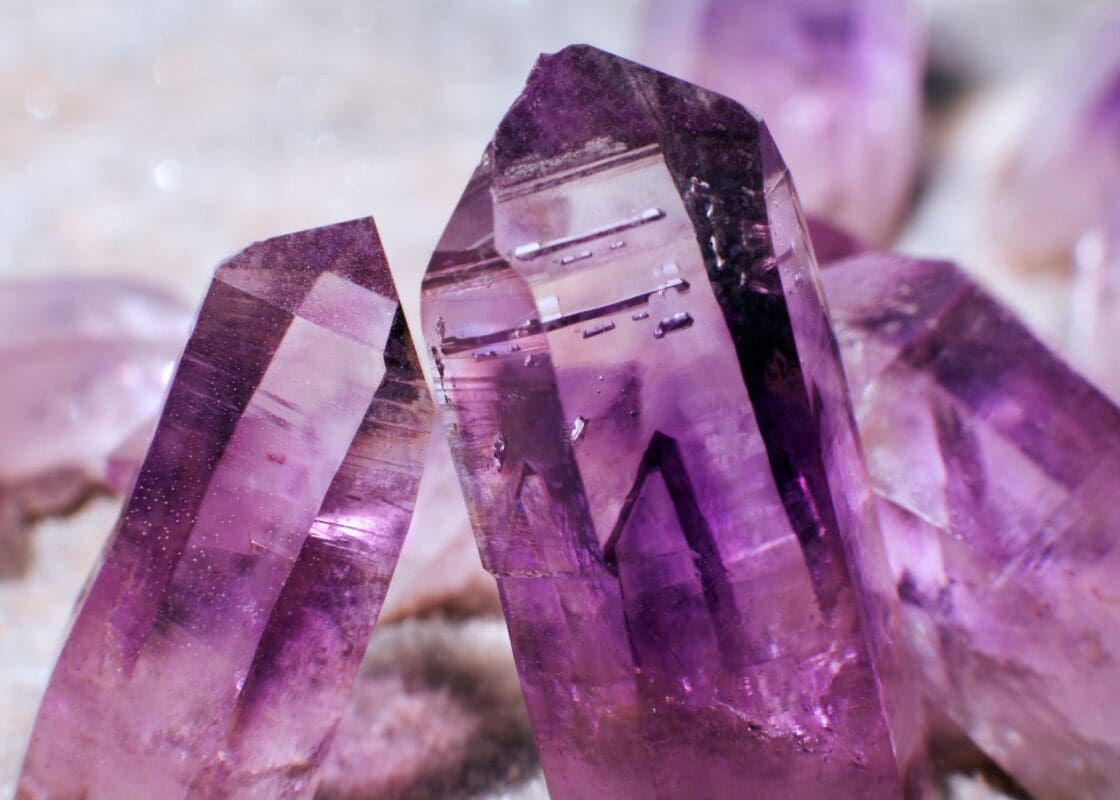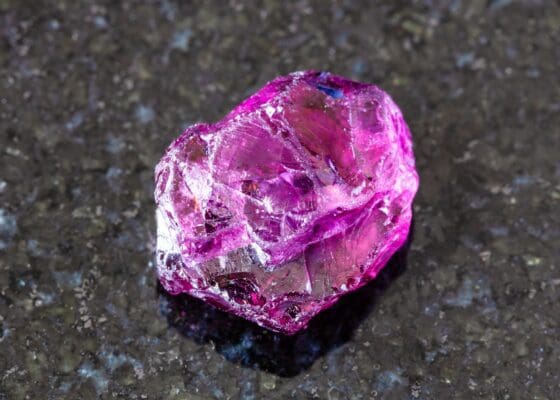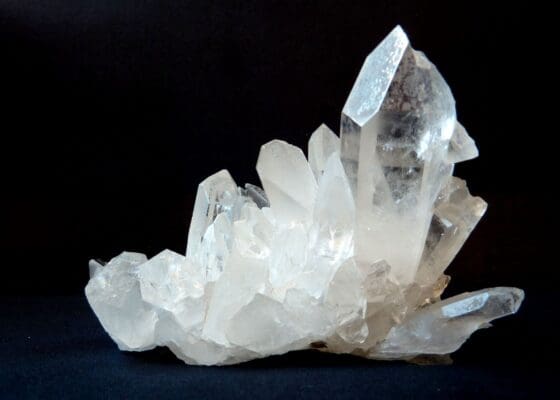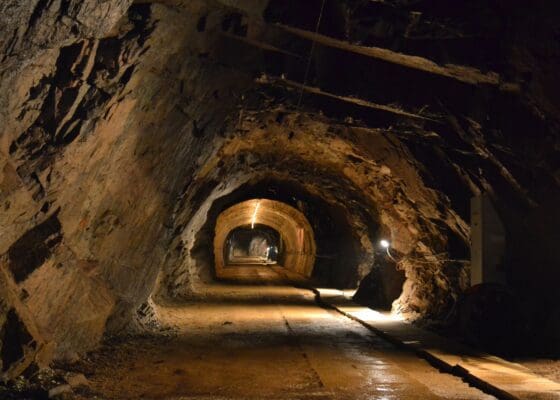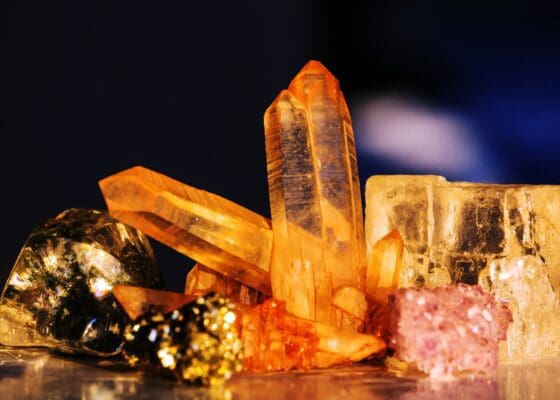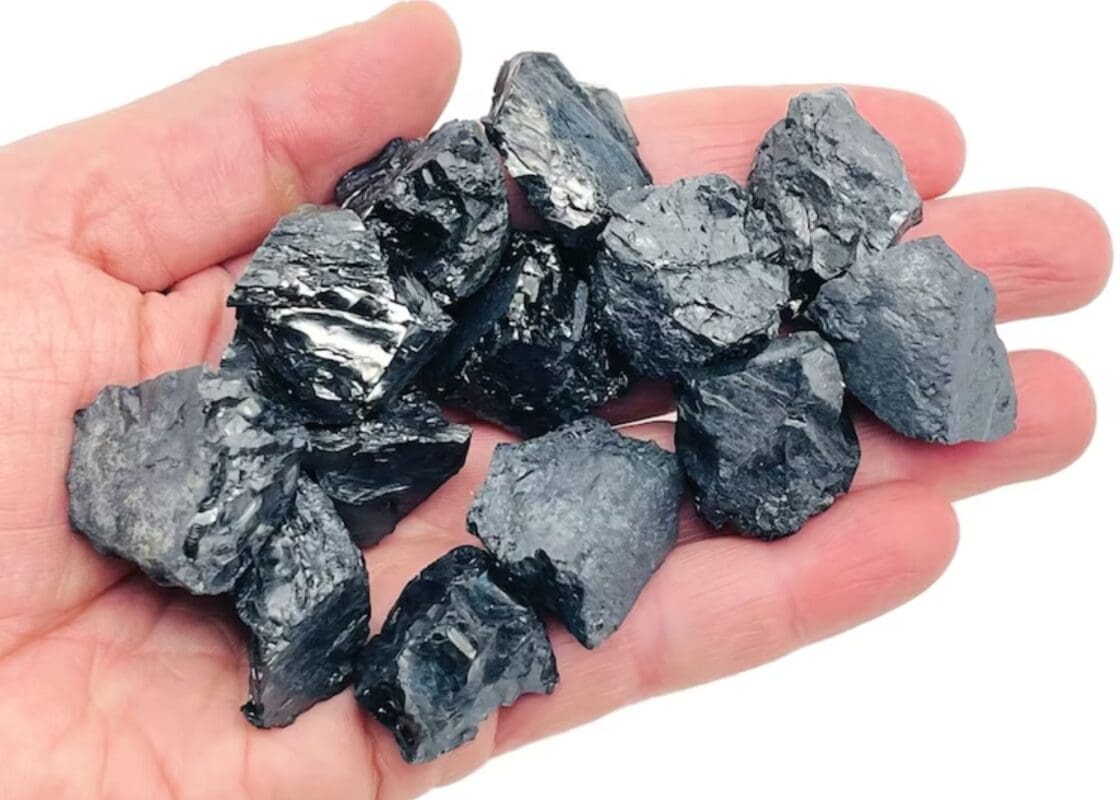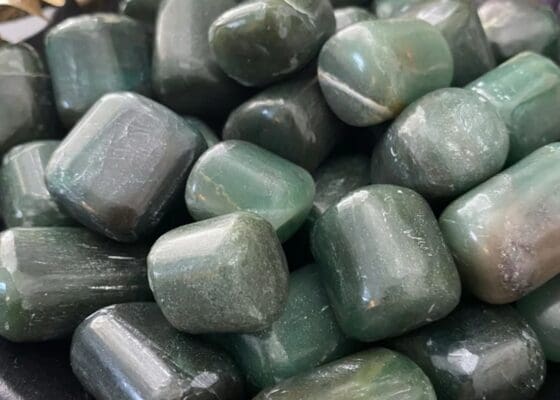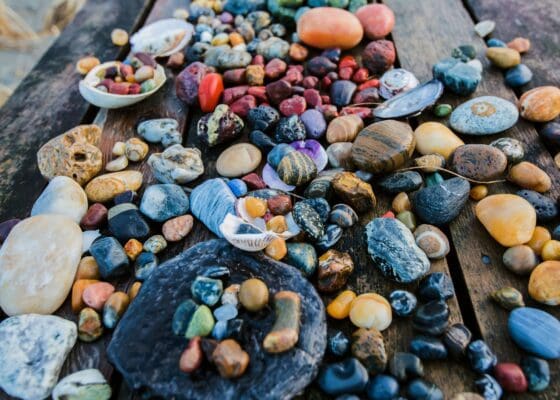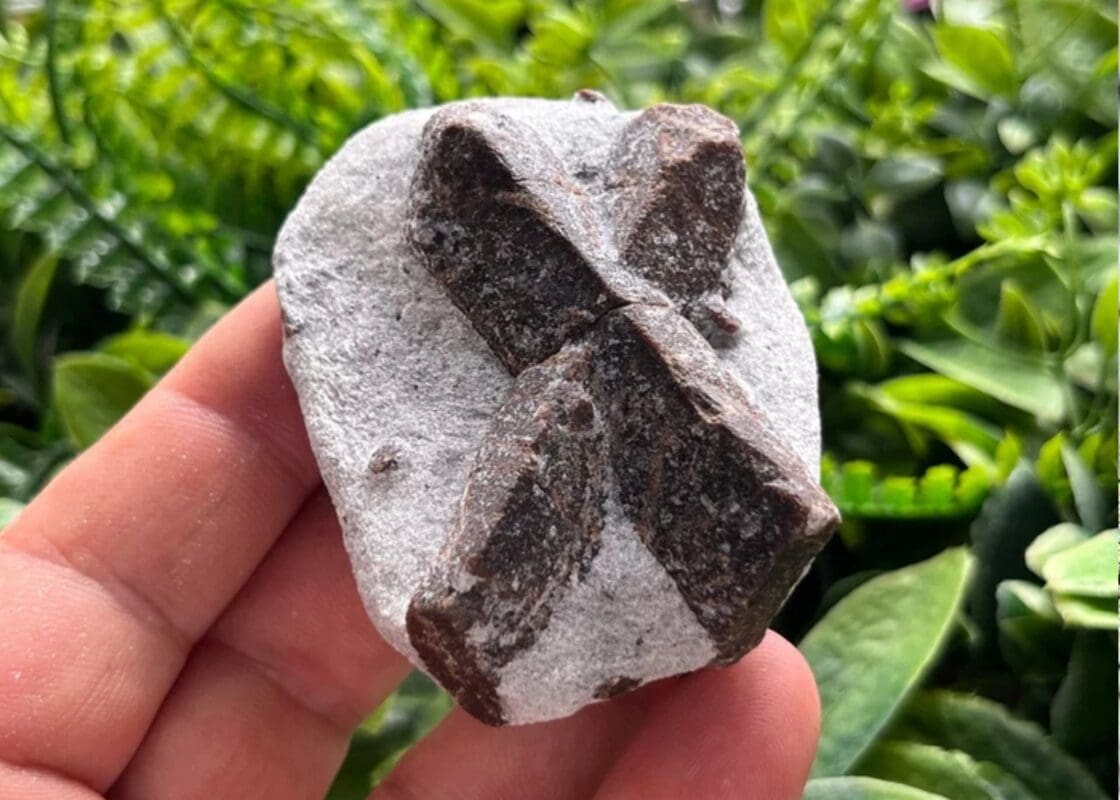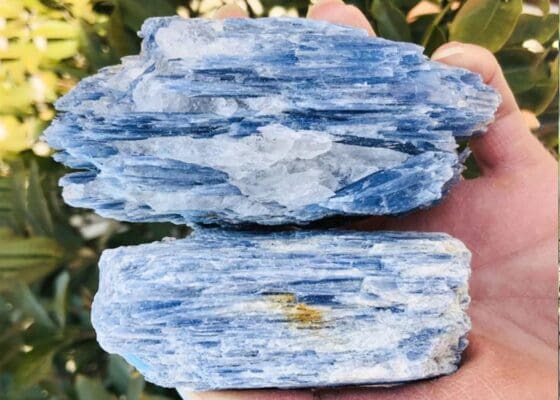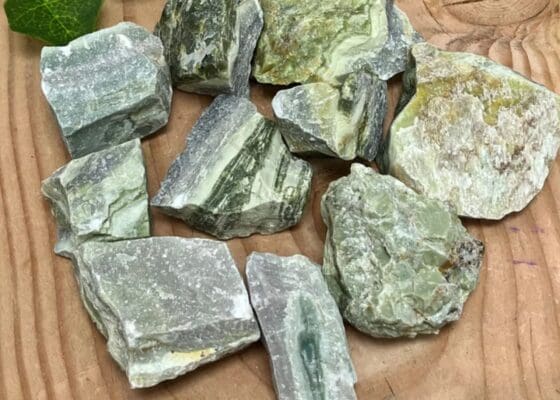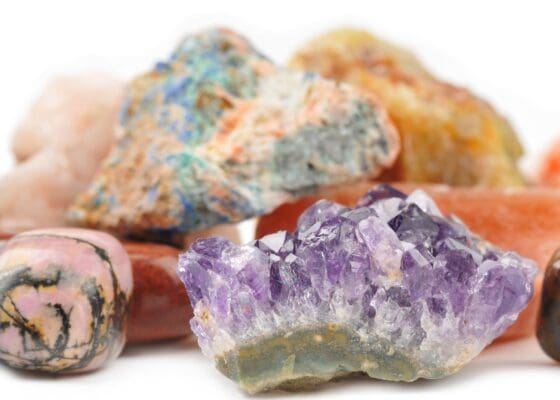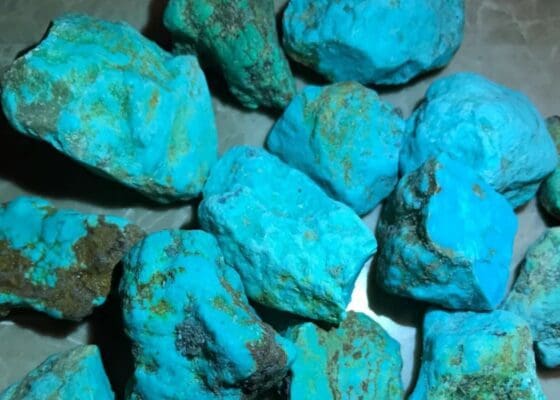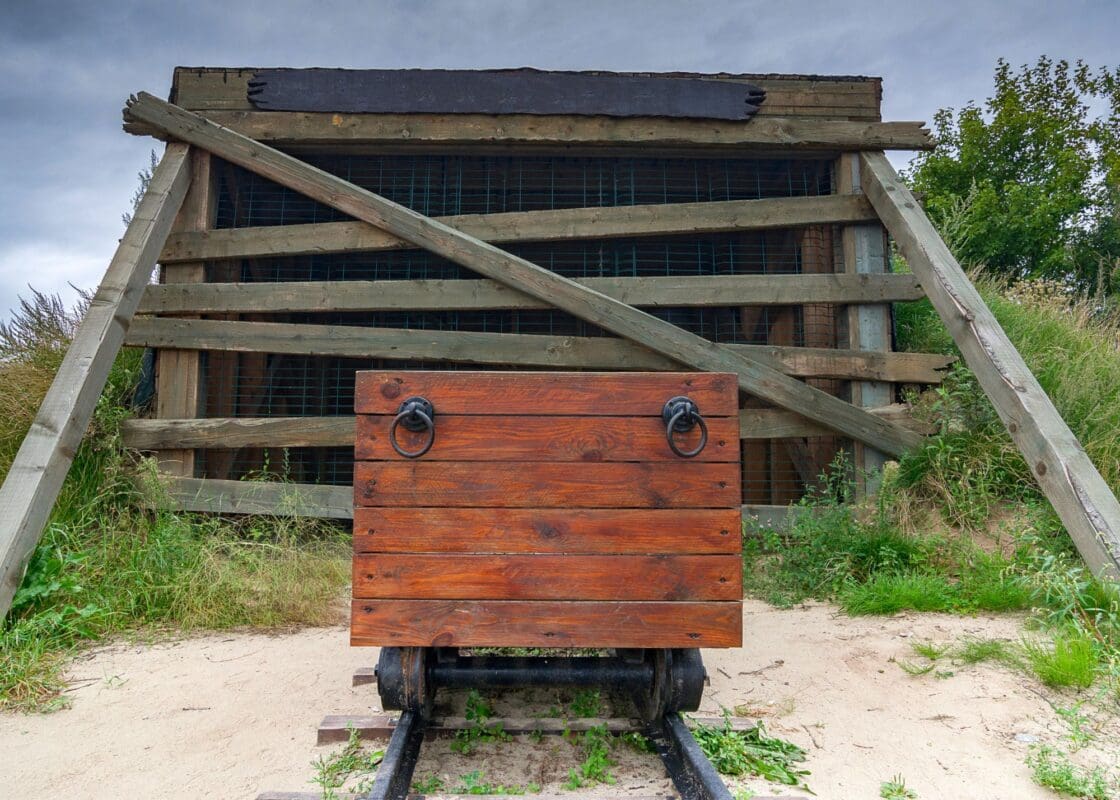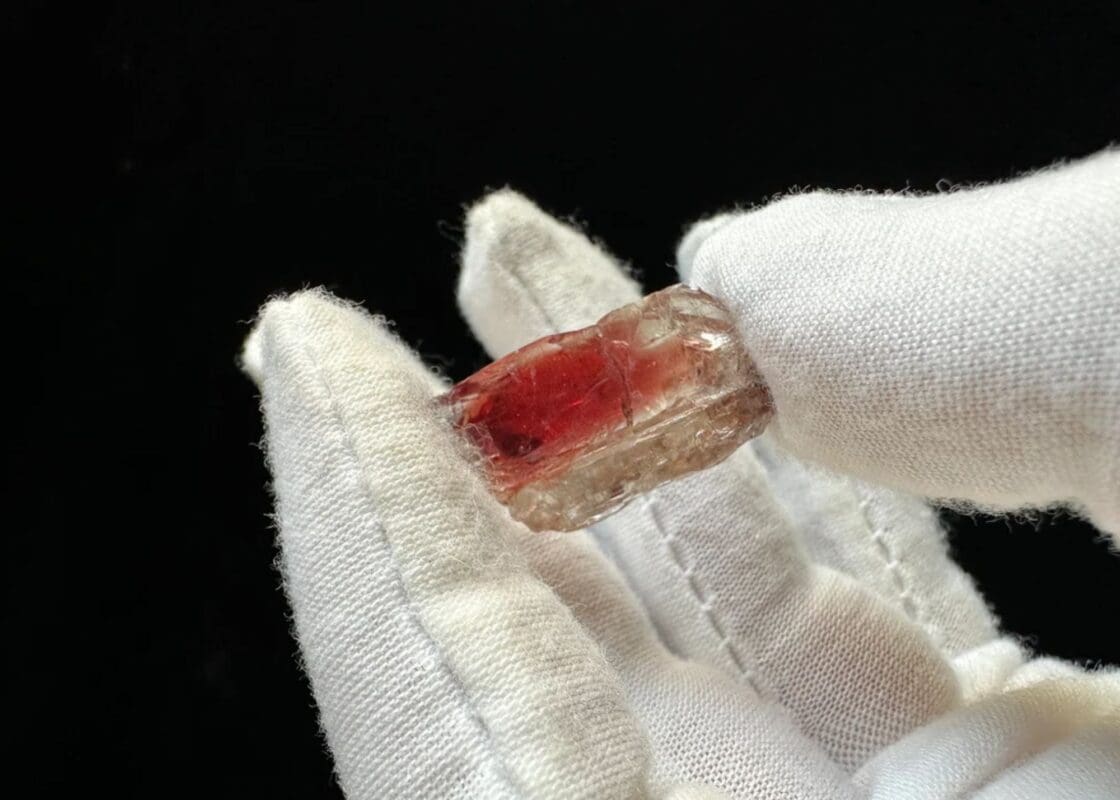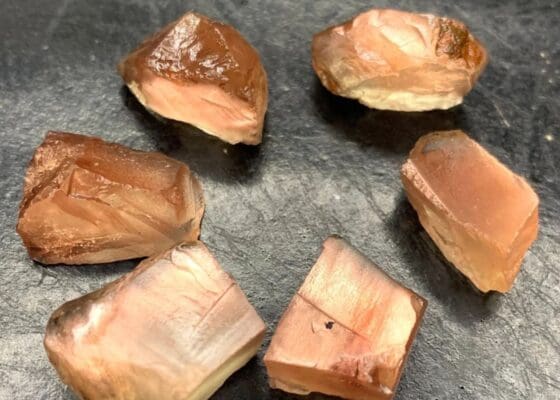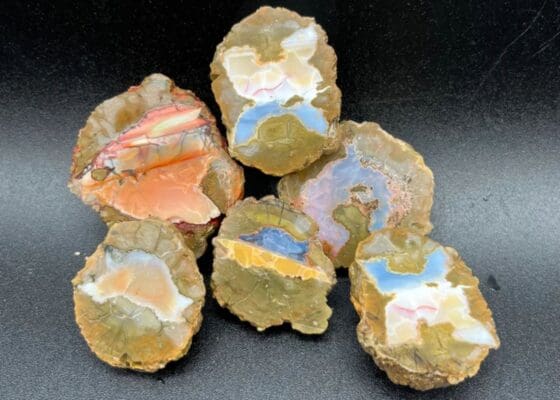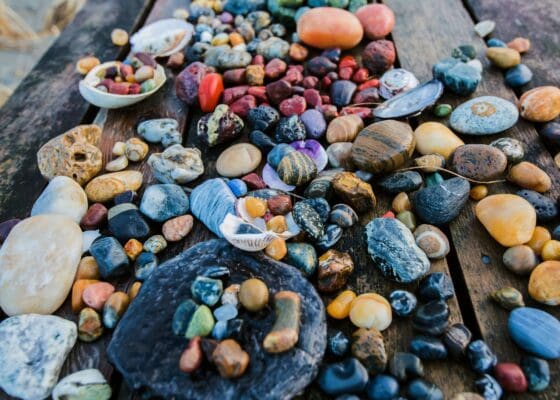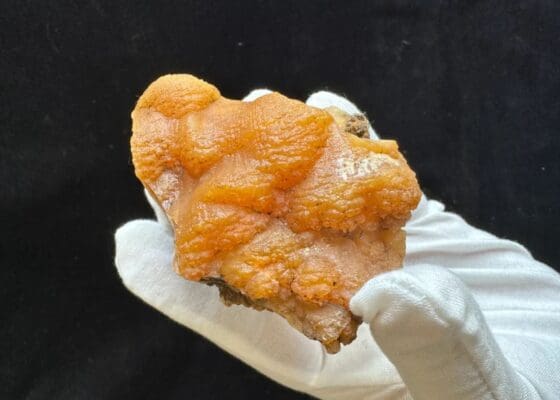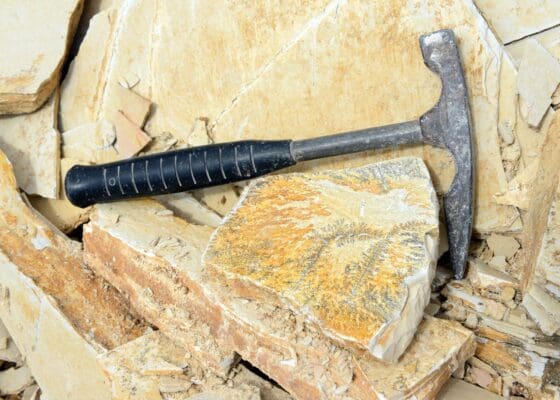Gem hunting, an ancient practice rich in history and excitement, has spanned cultures and continents, capturing the imaginations of young and old alike. Across diverse landscapes, from the rugged mountains of the American West to the riverbeds of Sri Lanka, the allure of unearthing a hidden gem during a gem mining trip has consistently proven irresistible. However, unlike the treasure hunts of fiction where X marks the spot, real-world gem mining is an intricate blend of preparation, patience, and a tad bit of luck.
While the possibility of discovering a sparkling gemstone is undeniably thrilling, it is the journey itself that often becomes a cherished memory. The gentle rhythms of sifting through earth, the camaraderie among fellow gem hunters, and the potential reward of holding a piece of Earth’s buried treasure make it an unforgettable experience. But to maximize the enjoyment of such an adventure, it’s crucial to come prepared. From having the right tools to ensuring safety and making it a fun-filled educational experience for children, a well-planned gem hunting trip can be both rewarding and enlightening.
This guide aims to provide both seasoned gem enthusiasts and first-time adventurers with a comprehensive checklist for a successful gem hunting trip, ensuring that you are well-prepared to embark on this journey of discovery. Whether you’re a family looking for a unique bonding activity, a couple seeking an adventurous date, or an individual with a passion for geology, this checklist will set you on the right path to uncovering nature’s hidden wonders.
1. Understanding the Basics of Gem Mining
- Brief History and Geography of Gem Mining
From the tombs of Egyptian Pharaohs adorned with lapis lazuli to the emerald-encrusted crowns of Mughal emperors, gemstones have long held an esteemed place in human history. Early civilizations quickly understood the value of these sparkling wonders, leading to the establishment of mining operations in regions where they were abundant.
Ancient gem mining was typically a surface-level affair, with early civilizations harvesting gems from riverbeds and exposed rock formations. Over time, as the demand for these precious stones grew, so did the sophistication of the mining techniques, evolving from mere surface gathering to more intricate tunneling operations.
The world’s geography plays a critical role in the distribution of gemstones. Various gems are formed under different geological conditions, often requiring very specific temperatures, pressures, and surrounding minerals. This has led to distinct regions becoming renowned for particular gemstones. For example, while Africa is rich in diamonds, rubies primarily hail from Myanmar (Burma), and Sri Lanka is famed for its sapphires.
- Popular Gem Mining Locations and Their Specialties
Every corner of the world boasts its own gemstone treasures, with certain regions gaining fame for their particularly stunning or unique finds:
- Africa: Renowned mainly for its vast diamond mines, especially in South Africa, Botswana, and Namibia. Apart from diamonds, the continent offers a variety of gemstones like tanzanite in Tanzania and emeralds in Zambia.
- Asia: Myanmar (Burma) stands out for its exceptional rubies, while Sri Lanka is known as the “Island of Gems,” boasting a plethora of gemstones including sapphires, garnets, and topaz. Afghanistan has historically been a source of lapis lazuli.
- South America: Brazil is a veritable treasure trove of gemstones, with vast deposits of amethyst, tourmaline, and topaz. Colombia, on the other hand, is world-famous for its lush green emeralds.
- North America: The U.S. is home to various gem mining locations, with states like North Carolina known for its emeralds and Arkansas for its quartz crystals. The southwest, particularly Arizona, is famous for turquoise.
- Importance of Research: Know What Gems to Expect in Your Chosen Location
Before embarking on a gem hunting expedition, it’s essential to arm yourself with knowledge. Not only does this enhance the excitement of the hunt, but it also provides a clearer direction for your endeavors.
Understanding what gemstones to expect in a given location can significantly enhance the success rate of your trip. Additionally, knowing the characteristics of these gems—such as their typical color, hardness, and luster—will aid in distinguishing genuine finds from mere rocks or imitations.
Furthermore, this research ensures that you respect local regulations. Some regions may have restrictions on mining or collecting, often to protect the environment or indigenous communities. A well-informed gem hunter is not only successful but also responsible and respectful of the land they tread upon.
2. Preparing for the Trip
A well-planned gem mining trip can mean the difference between a rewarding experience and a challenging ordeal. Given the outdoor nature of gem mining and the variety of environments where gems are found, meticulous preparation is paramount. Here’s a deeper dive into essential aspects to consider:
- Checking the Weather Forecast and Conditions of the Mining Area
Understanding the climatic conditions is crucial for several reasons:
- Safety: Mining in rainy or stormy conditions can be hazardous. Wet surfaces can be slippery, and the risk of landslides in some areas increases with heavy rainfall. If you’re mining in a riverbed, sudden rain can cause water levels to rise unexpectedly.
- Comfort: Being unprepared for cold winds, scorching sun, or intermittent showers can make the trip uncomfortable. Dressing appropriately ensures you can focus on gem hunting without weather-related distractions. For instance, in hot weather, lightweight and breathable clothing is advisable, while in colder conditions, layers can be beneficial.
- Productivity: Some gems are easier to find after a rain as the water washes away the overlying dirt, revealing hidden treasures. On the other hand, extreme heat might make certain terrains too challenging to navigate.
- The Importance of Getting Permissions or Permits if Required
- Legal Considerations: Many countries and regions have specific regulations governing mineral collection. Mining without the necessary permissions can lead to hefty fines or legal consequences. It’s essential to understand local laws, especially when traveling abroad or to unfamiliar regions.
- Environmental Responsibility: Permissions are often in place to protect the environment. Over-mining or irresponsible mining practices can harm local ecosystems. By obtaining necessary permits, you’re also ensuring that your mining activities align with sustainable and eco-friendly practices.
- Respecting Indigenous and Local Communities: Some gem-rich areas may be ancestral lands or hold spiritual significance for indigenous or local communities. Always ensure you have the right to mine in these areas and engage with local communities respectfully.
- Making Reservations if Visiting a Commercial Mine
- Guaranteed Spots: Commercial mines, especially popular ones, can get crowded, particularly during peak seasons. Making a reservation ensures you have a spot and don’t travel all the way only to be turned away.
- Benefits of Guided Tours: Many commercial mines offer guided tours. These tours often provide valuable insights into the history of the mine, gem mining techniques, and tips for finding gems. Reserving a spot in these tours can enrich your gem hunting experience.
- Amenities and Facilities: Commercial mines often have amenities like restrooms, food stalls, and even gem cleaning stations. By booking in advance, you can get information on the available facilities, helping you plan what to bring and what to leave behind.
The preparation phase is as vital as the trip itself. It sets the stage for a successful and enriching gem hunting adventure, ensuring you’re equipped, informed, and ready to unearth nature’s hidden treasures.
3. Essential Gear and Equipment
Mining gems isn’t just about luck; it’s also about using the right tools efficiently. Being equipped with the proper gear will enhance your gem-hunting experience, increase the likelihood of fruitful discoveries, and ensure the safety of both adults and children.
- For Adults:
- Proper Mining Tools:
- Shovels: A sturdy shovel helps in digging up dirt and reaching the gem-laden layers below the surface. Depending on the terrain, both large and hand shovels can be beneficial.
- Picks: Particularly useful in rocky terrains, picks can help break down harder surfaces, allowing access to gems that may be embedded.
- Buckets: Essential for holding the soil, rocks, and gravel you collect. It’s also crucial for sifting through materials in search of gems.
- Screens: Often used in riverbed or stream settings, screens help sift through collected material, separating larger rocks from potential gem finds.
- Tweezers: Once you’ve sifted through your materials, tweezers are instrumental in picking out smaller gems or those embedded within other rocks.
- Quality Gloves:
- Protecting your hands is crucial. Good gloves prevent blisters from repeated digging, offer protection against sharp rocks, and provide a better grip on tools.
- Appropriate Footwear:
- Sturdy Boots with Grip: In rocky or uneven terrains, it’s essential to have boots that support the ankle and have a strong grip to prevent slips or falls. Waterproof boots can be particularly beneficial if you’re mining in wet areas.
- Gem Reference Guide or Book:
- A comprehensive guide helps identify your findings. Detailed pictures, descriptions of gem characteristics, and information about where certain gems are typically found can be invaluable during your trip.
- Proper Mining Tools:
- For Kids:
- Kid-Friendly Tools:
- Small Shovels: Lightweight and easy to handle, these are perfect for kids to dig without getting too tired.
- Sifters: Instead of heavy screens, sifters are lighter and designed for smaller hands, making the sifting process fun and manageable.
- Pails: Smaller than typical buckets, pails are easier for kids to carry and can hold their personal gem discoveries.
- Kid-Sized Gloves:
- Just like adults, kids need to protect their hands too. Kid-sized gloves ensure a snug fit, allowing them to handle tools comfortably and safely.
- Comfortable Footwear:
- Sneakers or Closed-Toed Shoes: While they might not need heavy-duty boots, children still require protective footwear. Closed-toed shoes prevent stubbed toes, while sneakers offer comfort for extended walking and digging.
- A Kid’s Guide to Gemstones with Pictures:
- Tailored for younger minds, these guides use simpler language and vivid images, making gem identification an exciting and educational activity. They often also include fun facts that make the learning process engaging.
- Kid-Friendly Tools:
Having the right equipment tailored for each age group not only increases the chances of a successful gem-hunting trip but also ensures everyone’s safety and enjoyment during the adventure.
4. Safety Precautions
Gem hunting is an exciting outdoor activity, but like all adventures, it comes with its set of risks. Ensuring safety is paramount not only to prevent accidents but also to guarantee a comfortable and enjoyable experience. Here’s a deeper dive into the safety measures one should consider:
- Wearing Sun Protection:
- Hats: Broad-brimmed hats or caps provide shade for the face and neck. They shield against direct sunlight, helping to prevent heat exhaustion and sunburns.
- Sunglasses: Prolonged exposure to sunlight can strain the eyes and cause damage. Sunglasses, preferably with UV protection, will shield the eyes from harmful UV rays and reduce glare, especially if mining near water sources.
- Sunscreen: Sunburn can occur even on cloudy days. Using a broad-spectrum sunscreen with at least SPF 30, and reapplying every two hours or after sweating or swimming, ensures protection against UV rays.
- Staying Hydrated:
- Bringing Enough Water: Dehydration can quickly set in, especially during hot days. Ensure you carry enough water for the day’s duration. A general guideline is at least 2 liters for a full day outdoors, but this might vary based on weather conditions and physical exertion.
- Water Purification Tablets or Filters: If you’re planning a multi-day trip or are venturing into remote areas where fresh water might be scarce, having a means to purify natural water sources can be a lifesaver.
- First Aid Essentials:
- Bandaids: For minor cuts and blisters.
- Antiseptics: To clean wounds and prevent infections.
- Insect Repellent: Outdoor areas, especially near water sources, might have mosquitoes or other biting insects. A good repellent keeps these at bay.
- Other Essentials: Pain relievers, allergy medication, gauze pads, adhesive tape, and a pair of tweezers for removing splinters or thorns can be invaluable additions to a basic first aid kit.
- Safe Mining Practices to Avoid Accidents:
- Use Tools Properly: Always use tools as they are intended. For instance, when using a pick, ensure no one is standing close by to avoid accidental injuries.
- Avoid Overexertion: Take regular breaks. If you feel fatigued or dizzy, it’s essential to rest, hydrate, and seek shade.
- Be Cautious Near Water: If mining in riverbeds or streams, be aware of water currents. It’s easy to slip on wet rocks or underestimate the strength of flowing water.
- Being Aware of Surroundings:
- Wildlife: Some regions might be home to wildlife like snakes, bears, or large cats. Research the local fauna and be aware of any potential threats. Avoid disturbing animals and know the basics of what to do if you encounter them.
- Unstable Terrain: Areas like cliffs, loose rock formations, or slippery riverbeds can be treacherous. Always test the ground before stepping on it, and avoid areas that seem unstable.
- Stay Informed: If you’re in a commercial mining area or a park, heed any warnings or advisories. The local staff or guides are well-informed about potential dangers.
While the thrill of gem hunting can be intoxicating, safety should always be the top priority. A well-prepared miner who respects nature and prioritizes well-being will have a fulfilling and memorable adventure.
5. Making it Fun and Educational for Children
A gem mining trip can be an exhilarating adventure for children, introducing them to the wonders of the Earth and fostering a sense of curiosity and appreciation for nature. However, to ensure that the experience is both entertaining and enlightening, it’s crucial to incorporate elements tailored for younger minds. Here’s how to make gem hunting an unforgettable journey for kids:
- Introducing Kids to the World of Geology and Gemology:
- Storytelling: Begin the trip with captivating tales about famous gemstones, their histories, and legends. Kids often remember and relate to stories better than plain facts.
- Interactive Learning: Use a child-friendly gem guide to show pictures and explain the different types of gemstones they might encounter. Let them touch and feel samples if available.
- Ask Questions: Encourage them to ask questions about the gems and the Earth. Their inquiries can be an excellent opportunity for spontaneous learning moments.
- Simple Games and Challenges to Keep Them Engaged:
- Gem Bingo: Create bingo cards with pictures or names of gems they’re likely to find. The first one to spot and collect the gems on their card wins a small prize.
- Scavenger Hunts: Prepare a list of items or gems for them to find. This activity not only keeps them engaged but also fosters observational skills.
- Guess the Gem: Let them pick a stone, observe its characteristics, and then guess its name based on their guide or the information you’ve shared.
- Encouraging Them to Journal or Sketch Their Findings:
- Gem Diary: Provide them with a notebook where they can jot down where and when they found each gem, its characteristics, and any other observations.
- Sketching: For the more artistically inclined, encourage them to draw the gems they find. Sketching can help enhance their observational skills and appreciation for details.
- Sticker or Stamp Rewards: Each time they document a new gem, give them a related sticker or stamp to add to their journal, making the documentation process even more enjoyable.
- Teaching Kids How to Clean and Identify Their Gems:
- Cleaning Station: Set up a simple station with water and soft brushes. Teach them gentle brushing techniques to remove dirt without scratching the gems.
- Identification Process: After cleaning, sit down with them and help them identify their findings using the gem guide. Celebrate their discoveries and correct any misidentifications gently and encouragingly.
- Displaying Their Treasures: Once back home, assist them in creating a display for their gems – be it a shadow box, labeled jars, or a scrapbook. This will give them a sense of accomplishment and a keepsake from the adventure.
Incorporating fun, interactive, and educational elements ensures that the gem hunting trip isn’t just about the act of finding gems, but also about understanding, appreciating, and cherishing the treasures of our planet. For children, these experiences can spark lifelong interests and a deep appreciation for the wonders of the natural world.
6. What to Do with Your Finds
Once you’ve completed your gem hunting adventure and amassed a collection of sparkling treasures, the journey doesn’t just end there. The subsequent steps—cleaning, identifying, and showcasing your finds—can be equally rewarding. Here’s a guide to make the most of your gem discoveries:
- Cleaning and Preserving Your Gems:
- Cleaning Process: Most gems will be covered in dirt or mud after extraction. Use lukewarm water with a mild detergent and a soft brush to gently clean the surface. For softer gems, just using water might suffice. Ensure that you rinse thoroughly to remove any soap residue.
- Preservation: Some minerals and gems can degrade over time when exposed to sunlight or air. Research your specific finds to see if they require any special storage conditions, like being kept in a dark place or in a controlled environment.
- The Basics of Gem Identification:
- Color and Luster: The color and the way a gem shines (its luster) can be initial hints to its identity. However, note that many gems can come in a variety of colors.
- Hardness: The Mohs scale ranks minerals by their hardness. Simple tests, like trying to scratch the surface with a fingernail, penny, or steel blade, can give clues about a gem’s hardness and thus help in identification.
- Streak Test: The color of a gem’s streak (the color of its powder when scratched against a porcelain plate) can also be an identifying factor.
- Reference Materials: Invest in a good gemstone guidebook or use reputable online sources. These guides offer comprehensive information, from physical properties to geographical origins, aiding in the identification process.
- Considering Getting Your Finds Appraised:
- Value Estimation: If you believe you’ve found something of significant value, consider getting it appraised. Professional gemologists have the expertise to provide an accurate valuation.
- Documentation: An appraisal will provide you with official documentation of your gem’s worth, which can be essential for insurance or resale purposes.
- Crafting Ideas: Making Jewelry or Decorative Items:
- Jewelry Making: Turning your finds into jewelry like pendants, earrings, or rings can be a delightful way to showcase them. You can attend basic jewelry-making workshops or collaborate with a local jeweler.
- Decorative Displays: Embed your gems in decorative items like paperweights, ornamental bowls, or even mosaic art pieces.
- Gifts: Handmade gemstone crafts can serve as unique and personalized gifts for friends and family.
- Storing and Displaying Your Collection:
- Storage Boxes: Special gem storage boxes with individual compartments can help organize and protect your collection.
- Display Cases: For those particularly proud of their collection, glass display cases or shadow boxes can be a great way to showcase them while offering protection from dust and direct sunlight.
- Labeling: Label each gem with details like its name, date and place of discovery, and any other pertinent information. This not only aids in organization but also serves as a great educational tool.
By giving proper care and attention to your finds post-mining, you ensure that the memories of your gem hunting trip remain vivid and that your discoveries are preserved, showcased, and celebrated in the best possible manner.
7. Respect the Environment
Gem hunting is an exciting activity that immerses participants in nature’s raw beauty. Embarking on a gem mining trip offers the allure of discovering hidden treasures beneath the Earth’s surface. While this can be captivating, it’s essential to remember that these environments are delicate ecosystems. Respecting them ensures their preservation for future generations and maintains the habitats of various plants and animals. Here’s a closer look at how to approach gem hunting with an environmentally-friendly mindset:
- Adhering to a ‘Leave No Trace’ Philosophy:
- Minimize Impact: Always strive to disturb the environment as little as possible. When digging or excavating, return the earth to its original state as closely as you can. Fill in holes and restore disturbed areas to prevent erosion or potential hazards for other visitors.
- Take Only What You Need: While the thrill of discovery can be exhilarating, refrain from over-collecting. Leave some treasures for others to enjoy and to maintain the natural balance.
- Packing Out All Trash and Waste:
- Pack It In, Pack It Out: Always take all of your trash with you. Even biodegradable items like food scraps can disrupt the local wildlife’s dietary habits and attract predators or pests.
- Use Eco-Friendly Products: Consider using biodegradable soaps and detergents when cleaning your finds on-site. Avoid products that might contaminate local water sources.
- Human Waste: If restroom facilities are not available, ensure that human waste is buried at least 6-8 inches deep and at least 200 feet away from water sources, trails, and campsites.
- Being Mindful Not to Damage the Ecosystem:
- Stay on Designated Paths: Veering off established trails can cause erosion, damage undergrowth, and disrupt local habitats.
- Avoid Disrupting Wildlife: Maintain a safe and respectful distance from animals. Remember, you are a visitor in their home.
- Water Sources: If mining near rivers or streams, be mindful of aquatic life. Disturbing water beds can affect the life cycles of creatures like fish, amphibians, and insects.
- Respecting Property Boundaries and Rules:
- Seek Permission: If gem hunting on private property or areas with restricted access, always get explicit permission from landowners or relevant authorities.
- Follow Guidelines: Many gem hunting sites, especially commercial ones, have specific rules about where and how you can dig. Adhering to these not only ensures safety but also minimizes environmental impact.
- Respect Cultural or Historical Sites: Some areas might have historical or cultural significance. Always treat such places with reverence and avoid activities that might deface or degrade them.
In conclusion, a responsible gem hunter is one who not only seeks treasures beneath the earth but also treasures the earth itself. Respecting the environment ensures that the joy of gem hunting can be experienced by many generations to come.
8. Conclusion
Gem hunting is far more than a mere pursuit of glittering treasures; it’s a journey into the heart of the Earth, offering a profound connection to the world around us. As we sift through soil and rock, we’re not just unearthing gems but also unveiling stories of our planet’s history and evolution.
- Reflecting on the Joy and Satisfaction of Gem Hunting:
- Nature’s Bounty: Every gemstone, with its unique hue, sparkle, and structure, stands testament to the wonders of nature. Discovering one is akin to finding a hidden piece of art, sculpted not by human hands but by time, pressure, and elemental forces.
- Personal Achievement: There’s an unmatched satisfaction in the manual effort of digging, sifting, and finally spotting that glint in the rubble. The thrill of discovery, the tangible result of one’s perseverance, brings joy that’s hard to replicate.
- The Lifelong Memories Created, Especially When Done with Loved Ones:
- Bonding Over Gems: Shared experiences, especially those filled with excitement, challenge, and reward, have a unique way of bringing people closer. Families, couples, or groups of friends find gem hunting an activity that strengthens bonds, fostering teamwork and shared joy.
- Stories for the Future: Every gem discovered has a story. Where was it found? Who was with you? What challenges did you overcome to find it? These tales, often recounted over family dinners or campfires, become cherished memories, passed down through generations.
- Encouraging Future Trips and Continued Learning:
- Ever-Evolving Experience: No two gem hunting trips are the same. Different locations, seasons, and companions make each journey unique. There’s always a new terrain to explore, a different gem to find, and fresh knowledge to gain.
- Fostering Curiosity: Beyond the gems themselves, these trips open doors to deeper explorations into geology, geography, and environmental science. The quest for gems can evolve into a lifelong passion for learning about the Earth and its marvels.
- Advocacy for Preservation: As we grow more connected to the landscapes we explore, there’s an innate desire to protect and preserve them. Encouraging future trips also means advocating for responsible and sustainable gem hunting practices.
In essence, gem hunting is not just an adventure; it’s an invitation. An invitation to connect with the world, to forge deeper bonds with loved ones, and to discover the many wonders that lie beneath our feet during a gem mining trip. And as each trip concludes, it silently promises more adventures, more discoveries, and more cherished memories in the journeys to come.
Checklist for a Successful Gem Mining Trip
- General:
- Research on mining location and expected gems
- Permissions/permits
- Weather forecast
- Gear & Equipment:
- Mining tools (adult and kid-friendly versions)
- Gloves and footwear
- Gem guides or books
- Buckets or containers for collecting
- Safety:
- Sun protection: hat, sunglasses, sunscreen
- Drinking water and purification means
- First aid kit
- For Kids:
- Kid-friendly mining tools
- Games and challenges
- Journal or sketchbook
- Post-Trip:
- Gem cleaning supplies
- Gem identification tools or references
- Storage or display containers
- Environment:
- Trash bags (to pack out waste)
- Eco-friendly products (if staying overnight)
- Map of the area (to respect boundaries)
Remember, preparation is key to ensure a successful and enjoyable gem hunting experience for both adults and children!



